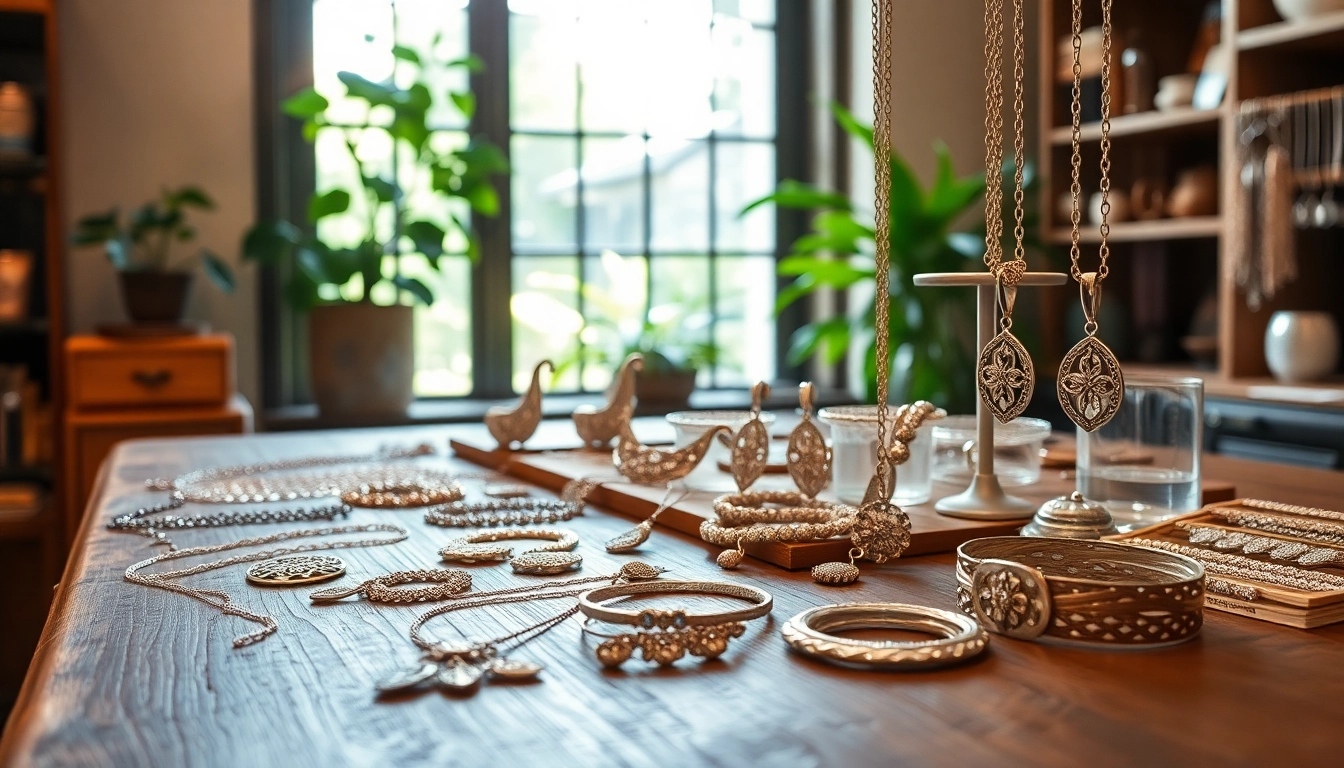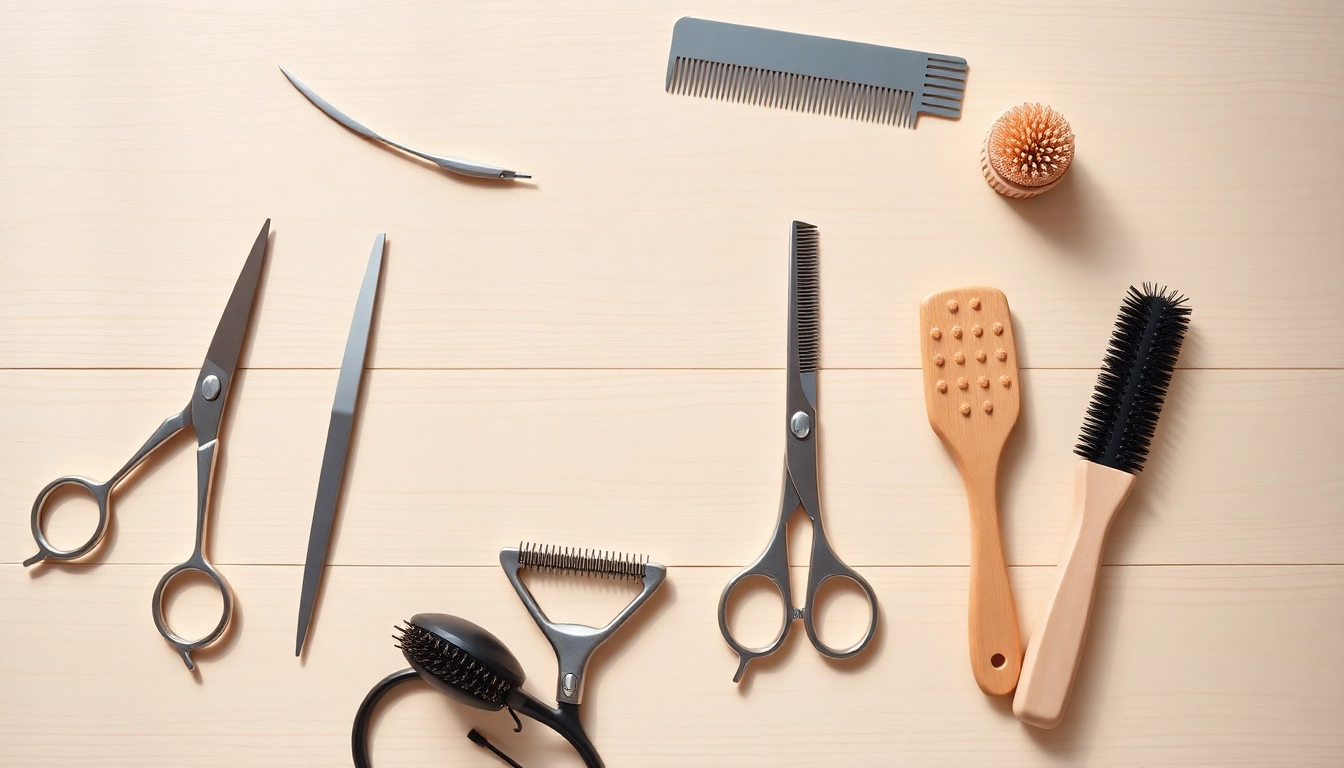Introduction to Silver Jewelry
Silver jewelry has captivated wearers for centuries, merging elegance with a sense of timeless beauty. Demanding attention not only for its aesthetic appeal but also for its inherent value, silver jewelry stands out as a popular choice among fashion lovers and collectors alike. The allure is not merely confined to its appeal but extends to its historical significance and the craftsmanship involved in creating stunning pieces. For an in-depth exploration of silver jewelry, we must delve into its foundations, styles, and care recommendations.
What is Silver Jewelry?
Silver jewelry refers to items crafted from silver or silver alloys, adorned with various designs and often imbued with cultural symbolism. The most common form used in jewelry is sterling silver, which comprises 92.5% silver and 7.5% other metals, typically copper, enhancing its strength and durability. Silver can also be used in a pure form, though due to its softness, it’s less practical for everyday wear.
History and Significance of Silver in Adornment
The inception of silver jewelry dates back to ancient civilizations, with artifacts discovered in burial sites in Egypt, Greece, and Mesopotamia. These items were often imbued with religious or cultural significance, utilized in ceremonies or as symbols of status. In ancient Rome, silver was associated with wealth and luxury, a reputation it retains today. Over time, the versatility of silver has allowed it to transcend across cultures and periods, emerging in diverse styles from tribal motifs to ornate Baroque designs. Silver’s association with the moon in many cultures has contributed to its mystical allure.
Types of Silver Used in Jewelry Making
Understanding the different types of silver used in jewelry making is essential for anyone looking to invest in or appreciate silver jewelry:
- Sterling Silver: The most popular type for jewelry, combining strength with beauty.
- Argentium Silver: A modern variant that includes germanium to enhance tarnish resistance.
- Fine Silver: A purer form than sterling, often used for making coins and bars due to its softness.
- Coin Silver: Historically made from melted silver coins, it contains 90% silver, now largely obsolete.
Design Inspirations in Silver Jewelry
The design landscape of silver jewelry is ever-evolving. From traditional craftsmanship to modern innovations, the inspirations behind these pieces reflect cultural heritage and contemporary tastes.
Traditional vs. Contemporary Styles
Traditional silver jewelry often showcases intricate designs featuring motifs that tell stories of cultural significance, such as those found in Native American jewelry emphasizing natural elements like animals and plants. Conversely, contemporary styles often feature minimalist designs with clean lines, reflecting modern aesthetics and personal preferences. Designers are increasingly merging traditional techniques with contemporary materials and styles to create unique pieces that resonate with a broader audience.
Trends Influencing Modern Silver Jewelry Design
One significant trend is the rise of personalization in jewelry, with consumers seeking unique items that reflect their individual stories. Custom engravings and birthstone inclusions allow for one-of-a-kind pieces. Sustainable and eco-friendly practices also play a crucial role, with brands focusing on ethical sourcing of silver and environmentally responsible manufacturing techniques. Additionally, the integration of gemstones and other materials is increasingly popular, allowing for bolder expressions of style.
Iconic Silver Jewelry Designers to Watch
The silver jewelry landscape is populated by both established and emerging designers who are pushing the boundaries of creativity:
- David Yurman: Known for his signature cable designs and sophisticated use of mixed metals and gemstones.
- John Hardy: A brand committed to artisanal craftsmanship and sustainability, featuring intricate designs inspired by Balinese traditions.
- Monique Péan: Designs focus on sustainable materials and ethical practices, often accompanied by unconventional textures.
Buying Silver Jewelry: What to Consider
The process of purchasing silver jewelry can be daunting, especially if one is unaware of what to look for. Various factors come into play that can enhance the shopping experience.
Quality Indicators of Genuine Silver Jewelry
When evaluating silver jewelry, consumers should look for specific markers of quality, including:
- Hallmarks: Genuine sterling silver will typically be stamped with “925” or “Sterling”.
- Weight and Texture: High-quality silver feels solid and has a smooth finish, whereas cheaper alternatives may feel lightweight or flimsy.
- Tarnish Resistance: Quality silver pieces often undergo treatments to prevent tarnishing, ensuring enduring beauty.
Tips for Selecting the Right Silver Jewelry for You
Choosing the right piece of silver jewelry requires consideration of personal style, occasion, and budget:
- Assess your wardrobe: Choose pieces that complement your existing clothing and personal style.
- Consider versatility: Select items that can transition from casual to formal settings.
- Look for timeless pieces: Investing in classic designs can ensure longevity in your jewelry collection.
How to Care for Your Silver Jewelry
Caring for silver jewelry is essential to maintain its beauty and quality:
- Regular Cleaning: Use a soft cloth to polish your silver and remove tarnish.
- Storage: Keep silver jewelry in a dry place, ideally in an anti-tarnish cloth or container.
- Avoiding Chemicals: Remove jewelry before swimming or using cleaning products, as chemicals can lead to tarnishing.
The Versatility of Silver Jewelry
One of the most attractive features of silver jewelry is its versatility, allowing it to be worn for various occasions and styles.
Styling Silver Jewelry for Different Occasions
Silver jewelry can fit seamlessly into any wardrobe, whether dressing up for a formal event or going out for a casual day:
- Casual Wear: Simple silver studs or a delicate chain can enhance everyday outfits.
- Work Attire: Opt for more polished pieces like silver cufflinks or a classic bracelet that conveys professionalism.
- Formal Events: Statement pieces, such as a bold necklace or intricate earrings, can elevate an evening outfit.
Layering Silver Jewelry for Maximum Impact
Layering silver jewelry can create unique looks and express personal style. Here are some tips to achieve an elegant layered effect:
- Mix different lengths of necklaces for a visually interesting ensemble.
- Combine pieces with varying textures to create depth.
- Don’t shy away from mixing silver with other materials like leather or gold for contrast.
Gifting Silver Jewelry: What You Need to Know
Silver jewelry makes a thoughtful and cherished gift. Consider the following tips:
- Know the recipient’s style and preferences to select a piece they’ll cherish.
- Think about meaningful engravings or customizations that add a personal touch.
- Consider the occasion and choose accordingly—classic pieces often work best for milestone events.
Conclusion: The Lasting Appeal of Silver Jewelry
As we explore the vast realm of silver jewelry, it becomes clear that its appeal goes far beyond mere ornamentation. It carries with it a rich history and represents a connection to art and culture.
Investing in Silver Jewelry for Your Collection
Investing in silver jewelry is not merely about adornment but can also be a smart financial decision. Silver, being a precious metal, often holds value over time. Classic, timeless pieces tend to maintain their worth better than trendy items.
The Eco-Friendly Benefits of Choosing Silver
Silver jewelry also aligns with eco-conscious lifestyles. Brands that focus on sustainable practices often prioritize ethical sourcing and environmentally friendly production methods, making silver a responsible choice for conscientious consumers.
Final Thoughts on Embracing Silver Jewelry
Whether you are a seasoned collector, a first-time buyer, or simply someone who appreciates beauty, silver jewelry offers a wealth of possibilities. By understanding its significance, appreciating its design versatility, and caring for it appropriately, we can ensure that silver jewelry continues to shine brightly for generations to come.



